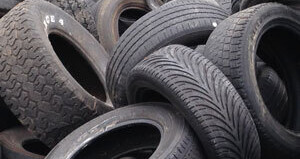OTR Wheel Green Carbon: Tire Recycling that Works
It’s always a pleasure to work with a company that listens to its customers, and applies creative thinking to help solve the problems they’re facing.

It’s always a pleasure to work with a company that listens to its customers, and applies creative thinking to help solve the problems they’re facing. To me, that’s business at its best – and when it’s done in way that also boosts sustainability, it’s a triumph.
We’re delighted to see our client Green Carbon and its sister company OTR Wheel Engineering in the news for their development of a self-sustaining tire recycling system, which they developed with a boost from Caterpillar Power Systems. Several of these remarkable systems are already in use recycling heavy equipment tires at oil sands facilities in northern Canada, and they hold great promise for helping address the very challenging problem of what to do with worn-out tires.
Tires take up lots of landfill space and are prone to “float” to the top, which can damage protective liners. Their flammability makes them a fire hazard, and while they can be burned in cement kilns and other primarily coal-fired incinerators, they’re not ideal fuel and they emit nasty toxins. There are a few secondary uses, like rubberized asphalt and backfill, but again, tires are not the ideal solution. As a result, tipping costs are high, so many get discarded improperly, which creates breeding grounds for mosquitoes and vermin.
Transforming Old Tires into Black Gold
OTR Wheel has an inside perspective on this, as a supplier of off-road tire and wheel assemblies to earthmoving and mining industries and the military, among others. It noticed when its customers talked about the difficulties of tire recycling and disposal, and decided to do something about it. Through Green Carbon, they undertook development of a recycling method that would produce carbon black, fuel oil, and steel, using its own synthetic gas by-product to power the process.
We had the pleasure of working with Green Carbon during the system’s early development, providing them with an understanding of where the process could be improved from an environmental issues standpoint—specifically, getting rid of the fuel required to get the process going. They incorporated those learnings into their development process, resulting in a robust recycling system which requires no external energy.
Our life cycle assessment (LCA) looked at this process from many different perspectives: as a disposal process for tires and as a production process for fuels, carbon black and/or steel (in the case of the large tracks used in the mining industry, the steel links that come out of the recycling unit are reusable as-is, provided they weren’t previously damaged). In each case, the LCA showed the process was better for the planet than other current methods. And that was before the company made the process self-sustaining.
We’re delighted to see this latest step in their development. With several systems in operation in Alberta’s oil sands, the process is already creating a benefit for the planet and turning a nasty expensive waste into valuable materials. We look forward to seeing this technology taken up more widely – and hope that other companies will show the sort of acumen, creativity, and determination that OTR and Green Carbon have.
PHOTO CREDIT: By MarkBuckawicki - Own work, CC0, https://commons.wikimedia.org/w/index.php?curid=40875551